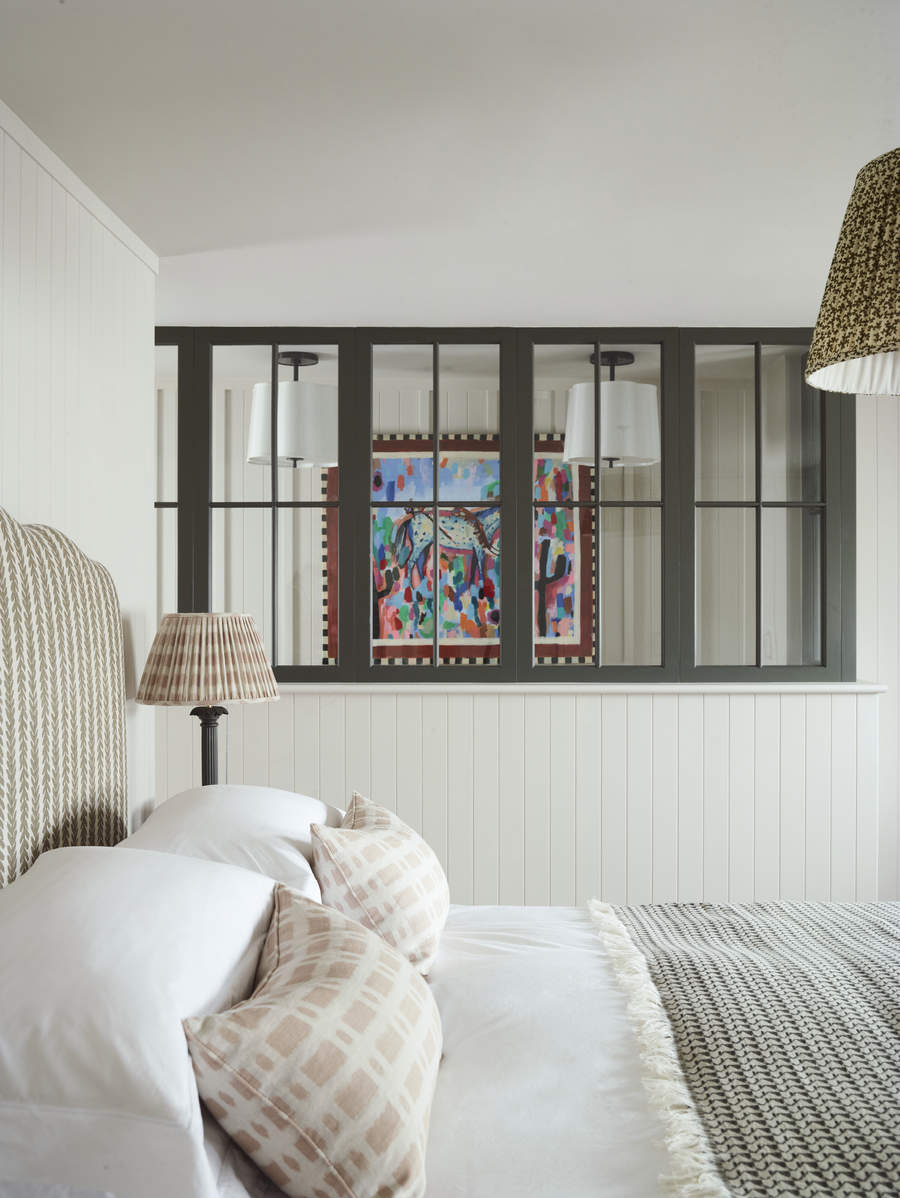How to remove an internal wall – tips for safe and easy DIY removal
Wondering how to remove an internal wall to open up your home’s layout? Our guide explains how to do it risk-free


Learning how to remove an internal wall safely is crucial if you happen to be one of the many homeowners out there looking to create a more open plan layout within your home. While the prospect of knocking down a wall can seem a bit daunting, this is a job often undertaken by DIYers keen to save on renovation costs.
That said, it is important to realize that there is more to taking down a wall than just bashing it with a sledgehammer – if you want to ensure the structural integrity of your home remains intact and that you don’t put yourself at risk, there are some checks to make and steps to take.
In our expert guide to carrying out this project, we reveal exactly how to remove an internal wall without the risk of damaging your property.
How do you check to see whether a wall is load-bearing?

It is really important before removing any internal walls to check whether they are load-bearing or non-load-bearing. Load-bearing walls shouldn't be taken out without professional advice because they support another structural element of a building, for example a wall above, or the roof.
'There are a lot of different ways to determine if a wall is load-bearing inside of a home, but the best way by far is to contact a structural engineer since it will ultimately be a necessity for most jobs anyway,' says Josh Rudin, owner at ASAP Restoration LLC. 'The reason for this is because to take down internal walls, you will want to have a permit, and to get a permit, you will need a structural engineer to give you the go-ahead. This helps to ensure the future safety of the home and prevent people from taking on misguided DIY projects that can compromise the structural integrity of the home and compromise the safety of all who enter it.'
But how can you tell if a wall is load-bearing?
'The best way to determine this is if the wall runs the entire length of the house or if the ceiling joist runs perpendicular to the wall,' explains Chris Sikes, president at Handyman Connection of Wilmington. 'All exterior walls are load-bearing.'
Design expertise in your inbox – from inspiring decorating ideas and beautiful celebrity homes to practical gardening advice and shopping round-ups.
'If you want to determine if a wall is load-bearing before you consult a structural engineer, then there are several ways to go about achieving this,' adds Josh Rudin. 'Check the foundation. Load-bearing walls typically run in concert with the ridge of the home. Or, to look at it another way, load-bearing walls also typically run perpendicular to the floor joists and ceiling rafters.
'You can get a good idea if a wall is load-bearing by inspecting the wall from within the attic too,' further explains Josh. 'This will generally indicate if the wall is holding up the home because it will be supporting the roof.'

Joshua Rudin is the Owner of ASAP Restoration LLC and a Certified Restorer. Before opening the doors in 2008, Joshua had previously been a successful entrepreneur in the restaurant industry owning and running a number of thriving locations for more than two decades
How to remove a non-loadbearing wall

If you have established that the wall you are dealing with is not holding anything else up, you can proceed by taking the following steps, but first, arm yourself with all the equipment you’ll need.
Toolkit for removing a wall
According to Alan Foster, director at Timber Kings, to safely remove a non-load-bearing internal wall, you will need to gather together the following kit, all of which are really handy DIY tools to have to hand :
- Dust mask
- Safety goggles
- Plastic sheeting
- Drop cloths
- Sledgehammer
- Reciprocating saw – the DEWALT 20V MAX* XR Reciprocating Saw from Amazon is a great buy
- Pry bar
- Utility knife
- Heavy-duty trash bags for debris
1. Protect floors and surroundings
It is amazing just how much dust and debris will be produced by knocking down a wall – so make sure you contain the mess as much as possible.
'Cover the floor with drop cloths and seal off other areas with plastic sheeting to contain dust,' advises Alan Foster.
This Painters Plastic Drop Cloth from Amazon is a good size for the job.
2. Turn off utilities
In order to do this job safely, you should first check that all utilities that might be affected are turned off.
'Ensure all electrical, water and gas lines within the wall are shut off and disconnected,' says Alan.
3. Make cuts where the wall joins horizontal surfaces
Next, you need to take steps to minimize damage to the ceiling and walls that are attached to the wall you are removing.
'Use a utility knife to cut along the seams where the wall meets the ceiling and adjacent walls to prevent damage to other surfaces,' suggests Alan Foster.
Learning how to patch a drywall ceiling isn't too taxing should you find a little surface damage after this step.
4. Remove drywall
Now you can take off the trim and drywall covering the timber studs and framework that make up the structure of the wall itself.
'Use a sledgehammer or a reciprocating saw to cut through the drywall,' advises Alan Foster. 'Pry off large sections and dispose of them.'
The Wonder Bar Pry Bar from Stanley at Amazon would come in really useful here
5. Remove studs
With the drywall gone, you will be able to see the bare bones of your wall and begin dismantling it.
'Cut through the studs and framework with the reciprocating saw, then pry them loose from the floor and ceiling,' says Alan.
'Once all the studs are removed you will begin to remove the top plate (the timber section at the top of the wall, attached to the ceiling) making sure not to damage the ceiling,' says Chris Sikes. 'The last part will be to remove the bottom plate on the floor.'

Chris is the owner and operator of Handyman Connection of Wilmington, a home improvement and repair service that provides quality craftsmanship and customer satisfaction. Chris is also a proud il veteran of the US Army, where he served for 13 years. He has more than 17 years of experience in the home construction field.
6. Clean up
Once you have cleared away all the associated debris and dust, you may well find that some refinishing work to the walls and floors is required. Familiarize yourself with how to touch up paint on walls to restore a fresh finish.
Arm yourself with a stash of these 65 Gallon Trash Bags from Amazon to take care of all the rubble that will be left behind.
How to remove a load-bearing wall

If, upon checking, you discovered that the wall you want rid of is, in fact, load-bearing, what next? How do you go about removing it without putting your property (and its occupants) at risk?
'Professionally,' states Josh Rudin. 'You need permits to remove a load-bearing wall. This is because doing so compromises the structural integrity of the home as a whole. The proper way to do this is by creating a temporary wall and beam on both sides of where the wall will be removed from. Then these are jacked into concert with the existing wall until they are holding the weight.'
While this is one of those DIY jobs that real estate agents want you to stop doing yourself, there will always be those die-hard DIYers out there keen to give it a go themselves, or perhaps to give the professionals a ‘helping hand’ and so it is useful to explain the process.
'You should first install temporary support walls on either side of the wall you plan to remove,' explains Alan Foster. 'These supports will bear the load while you work.
'You will then need to create a support beam – a properly sized beam to replace the load-bearing wall. This should ideally be calculated and installed by a professional,' continues Alan. 'Once temporary supports are in place and secure, follow the same steps as removing a non-load-bearing wall.'
'The reasons for hiring professionals to do this are numerous, but the biggest reason is that when you remove the old wall, the only thing supporting your entire home will be the temporary one that a professional ensures will be safe and structurally sound even in the interim,' points out Josh – definitely an important point to bear in mind.

Alan Foster is the Director of Timber Kings, a leading building, gardening and landscaping merchant. With a keen focus on quality and customer satisfaction, Alan has steered Timber Kings to become a trusted name in the construction and garden industry, known for supplying a wide range of construction materials. His expertise encompasses everything from timber products like fencing and decking to custom concrete products, paint, plumbing, gardening materials, outdoor furniture, and more.
FAQs
How long will it take to remove an internal wall?
Obviously, this will largely depend on the size of the wall and how quickly you work. It is a good idea if you can get someone to help you with the job too – and this will definitely speed things up.
'The entire process can take anywhere from a full day to a few days, depending on the complexity and whether the wall is load-bearing,' says Alan Foster.
What should I do if there are cables and pipework in the wall?
In some cases, once the drywall has gone, you will find that wires, pipes or HVAC ductwork might have been run through the wall – in which case you will need to find somewhere else for them run.
Although it might be tempting to give this a go this really is one of those household projects not to DIY – you are far better off calling in the pros here as work will need to be carried out in a code-approved manner. In most cases, they will be rerouted above or below the wall that is being removed.
While removing an internal wall is a great way to open up a home to help bring in natural light and encourage a sociable feel, completely open plan living isn't for everyone. Take a look at the broken plan kitchen trend as an alternative if you still want a little division between your spaces.

Natasha has been writing about everything homes and interiors related for over 20 years and, in that time, has covered absolutely everything, from knocking down walls and digging up old floors to the latest kitchen and bathroom trends. As well as carrying out the role of Associate Content Editor for Homebuilding & Renovating for many years, she has completely renovated several old houses of her own on a DIY basis.